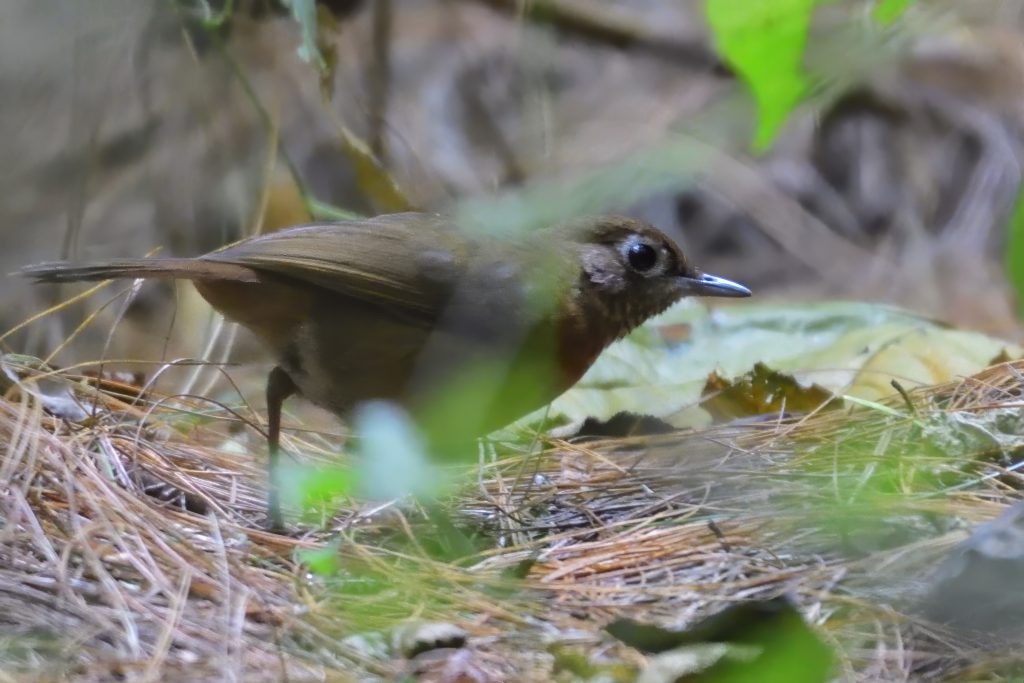
Spot-throat – Photo Lifer
Day 1, Thursday September 7, Kilimanjaro Airport – Kiligolf.
On that day I picked up two Icelandic people early in the morning at the airport near my home. Erling was the one that had booked the trip and he came with his travel partner whom I leave nameless for now. Erling booked the trip many months ago and although he had never been to Africa except Northern Africa, he came highly prepared. He had taken my list of potential birds to get on my Usambara trip and had even made a compendium with pictures of the birds and the likelihood of getting them. He had shared this document with his travel partner many months before. His travel partner were a novice birder and had absolutely not prepared himself at all. He did not even know how to operate his camera. As far as I could tell, he could not separate a sparrow from a crow. I am so surprised by such people. They have had all the time in the world to prepare for a trip of this magnitude and yet come totally clueless? I was so much looking forward to the trip, because Erling acted like “a child in a candy store” he even had a calendar counting days for his arrival. Unfortunately his travel partner took all the joy away from the trip. On the way from the airport I stopped for the first special bird, Taveta Weaver. We were also lucky to see Senegal Lapwing on the way home
Anyway, we arrived at Kiligolf and although it was a little late in the morning, we took a bird walk. Here are some of the birds we found in the garden before the walk: Scarlet-chested, Variable and Collared Sunbird, Spotted Palm Thrush, Chestnut and Vitelline Masked Weaver and Red-billed Firefinch. On the walk: Purple Grenadier, Slate-colored Boubou, Fork-tailed Drongo, Wire-tailed Swallow, Rattling Cisticola, Tropical Boubou, Dark-capped Bulbul, Sombre Greenbul, Red-cheeked Cordon-bleu, African Palm Swift, African Pied Wagtail, Long-tailed Fiscal, African Grey Flycatcher, Magpie Shrike, Grey Heron, Striated Heron, Yellow-billed Stork, Tawny-flanked Prinia, African Paradise Flycatcher, Pale White-eye, White-browed Coucal, Mottled and Alpine Swift, Red-eyed Dove, Black-crowned Night Heron, Brown-crowned Tchagra, Malachite Kingfisher, Emerald-spotted Wood Dove, Grey-headed Kingfisher, Hadada Ibis, White-browed Scrub Robin, Orange-breasted Bushshrike, Blue-naped Mousebird, Yellow-breasted Apalis and African Grey Hornbill. We had now reached the house and Selvine had prepared a nice lunch for us. During and after lunch we viewed birds in my garden before we went on a new walk. Here are some of the birds we saw: Village Indigobird, Green-winged Pytilia, Grey-backed Camaroptera, Buff-bellied Warbler (all in the garden), then on the walk, we added: Pin-tailed Whydah, African Fish Eagle, Brown-breasted Barbet, Black-headed Oriole, Black Cuckooshrike, Arrow-marked Babbler, Giant Kingfisher, Mountain Wagtail, Reed Cormorant and Great Egret. Not a full day on Kiligolf, but we still managed quite a few species considering we only started birding at around 10:30, so we missed completely the morning birding.
Some pictures from Day 1

Long-tailed Fiscal, Lanius cabanisi, Endemic to NE Africa

African Grey Flycatcher, Melaenornis microrhyncus, Endemic to NE Africa

Magpie Shrike, Urolestes melanoleucus
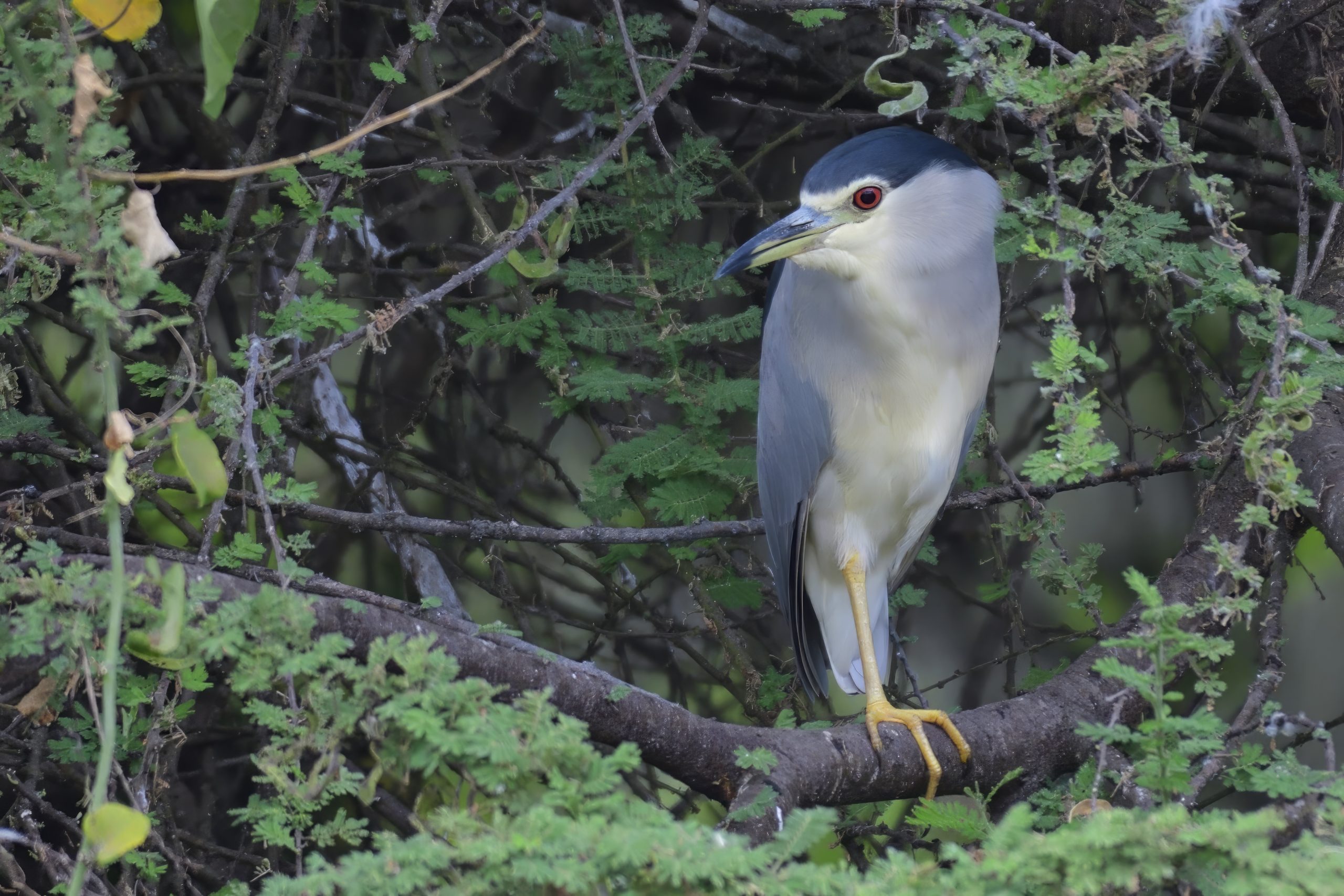
Black-crowned Night Heron, Nycticorax nycticorax
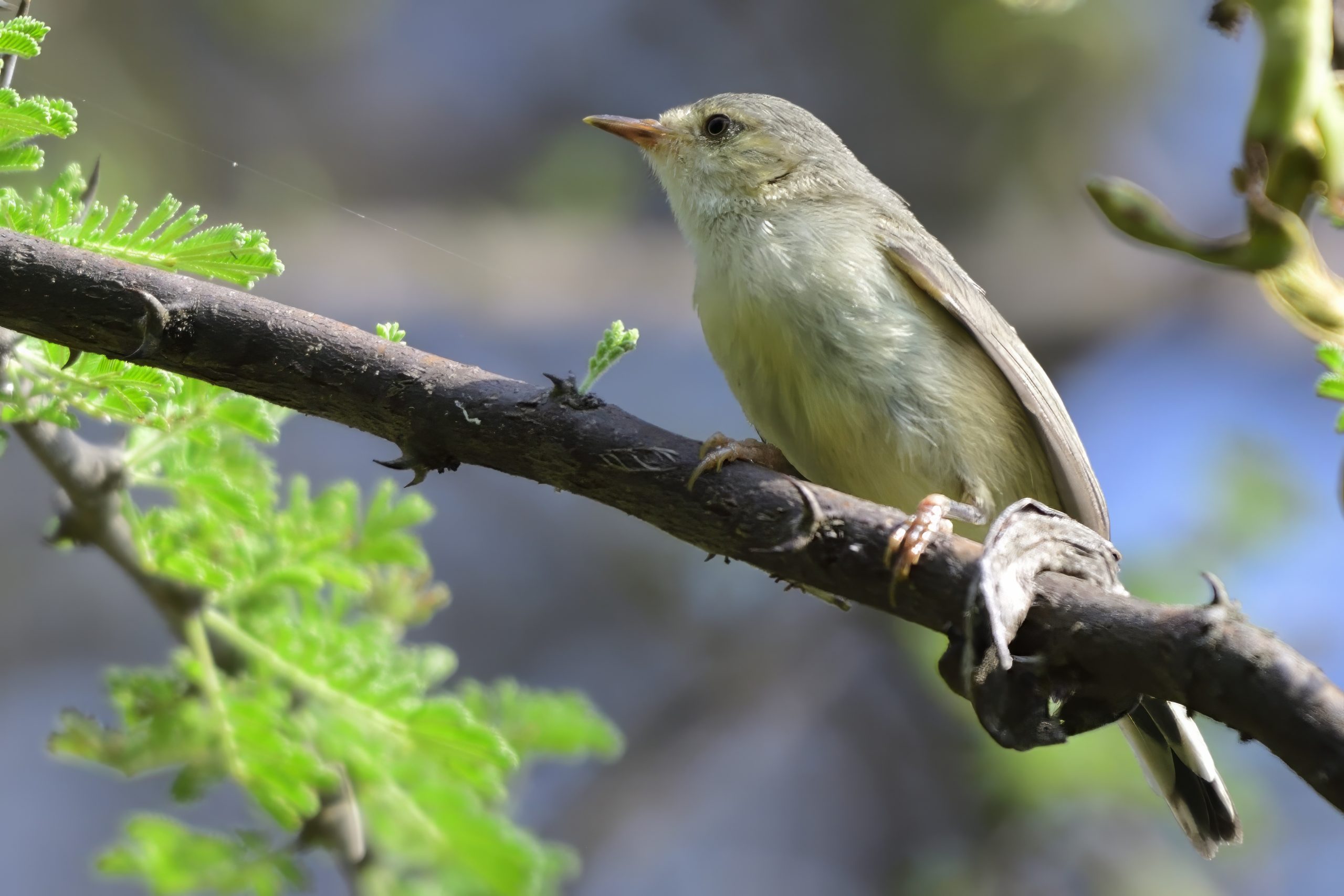
Buff-bellied Warbler, Phyllolais pulchella

White-bellied Go-away-bird, Crinifer leucogaster, Endemic to NE Africa

Pale White-eye, Zosterops flavilateralis, Endemic to NE Africa
Day 2, Friday September 8: Kiligolf, Lark Plains, Oldonyo Sambu and north of Lengijave
We started early from home to be on time at the Lark Plains. On the way we picked up African Sacred Ibis, Pied Crow, Northern Fiscal and Augur Buzzard. After a short time on a trip, you know what person will be the challenge. It is normally the person that wants to do everything and actually do not have a clue what he or she is doing. My trusted guide Isihaka always knows how to handle my cameras. On trips where we do some birding from the car I always carry a handhold camera with a 500mm lightweight lens and my big 600 F4, 5.5 kg lens with a 1.4 converter for use on a bean bag from the window of the car. Isihaka is very well aware how to handle my gear, but there is always this guy that wants to give you a helping hand. In this case one of my friends lifted my monstrous lens by grabbing the camera body instead of lifting the lens. This wrong handling of my gear effectively departed my camera body from the lens where it should not depart. This is an irreparable damage to one of my bodies. I managed to keep myself calm and the person were excellent at everything (despite absolutely zero education) and promised to fix it although I knew it was in unfixable without a Nikon certified camera repair shop. The nearest is in Pretoria, South Africa. One thing is to try to help another thing is to keep your hands off stuff you do not know how to handle. I kept calm, but understood that the person in question would give me problems on the reminder of the trip. We drove slowly to our meet up spot with the Masai and got Capped Wheatear, Rosy-patched Bushshrike, Chestnut-bellied Sandgrouse and Taita Fiscal before we parked. To my surprise there were no signs of the Masais, so we had to find the larks ourself. Red-capped, Short-tailed and Beesley´s were pretty easy to find. We returned to the car and had Banded Parisoma. Just before we loaded up we saw one more Lark and it turned out to be a Rufous-napeed (Race sentenniel). I knew we would find the Foxt Lark on the way to the Masai boma. We started driving slowly towards the Boma. It were actually very quiet, but we still managed to add some birds: Eastern Chanting Goshawk, Foxy Lark, Southern Grosbeak Canary, Yellow-bellied Eremomela, Red-fronted Prinia and Pygmy Falcon. We parked under my normal tree for breakfast. During breakfast and on our walk in the dry Acacia Woodland we added Grey-capped Social Weaver, Northern Red-billed Hornbill, Wahlberg´s Eagle, Marico Sunbird, Kenya Sparrow, Pygmy Batis, Abyssinian Scimitarbill, Red-fronted Barbet, Crested Francolin, Cardinal Woodpecker, Red-throated Tit, White-bellied Canary, White-bellied Bustard, Greater Kestrel and Mouse-colored Penduline Tit. No sign of the Ashy Cisticola although we tried hard.
Our next stop were Oldonyo Sambu. Our prime target here were the Little Rock Thrush that we dipped on. Other new birds for the day included Speckled Pigeon, White-fronted Bee-eater, Rock Martin, Red-faced Crombec, Black-chested Snake Eagle and Hildebrandt´s Starling.
Our last stop for the day were our place just north of Lengijave. Our prime target here were Lyne´s Cisticola. Isihaka (my guide) and I split up to find it. My friends followed me, they should have gone with Isihaka because he found one. When they caught up with him, the bird were gone. I realise in certain seasons, the Cisticolas are very hard to get to react. We found many other birds at the site though including Schalow´s (Abyssinian Wheatear), Baglafecht Weaver, Dusky Turtle Dove, Long-billed Pipit, Red-and Yellow Barbet, African Hoopoe, Bronzy Sunbird, Chestnut Sparrow, Reicenow´s Seed-eater, Yellow Bishop, Speke´s Weaver and Streaky Seed-eater. We returned home where Selvine again had cooked us a lovely dinner.
Some Pictures from Day 2

How to separate a camera from a lense with a little help of a “know it all” Icelandic friend. The bajonet coupling is stil on my converter.

Beesley´s Lark, Chersomanes beesleyi, Endemic to a small area North of Arusha, Tanzania with maybe less than 100 birds remaining.

Short-tailed Lark, Spizopcorys fremantlii, Endemic to NE Africa

Rufous-naped (Sentenial) Lark, Mirafra Africana

Pygmy Batis, Batis perkeo, Endemic to NE Africa

Crested Francolin, Ortygornis sephana, race grantii

Schalow´s (Abyssinian) Wheatear, Oenanthe schalowi
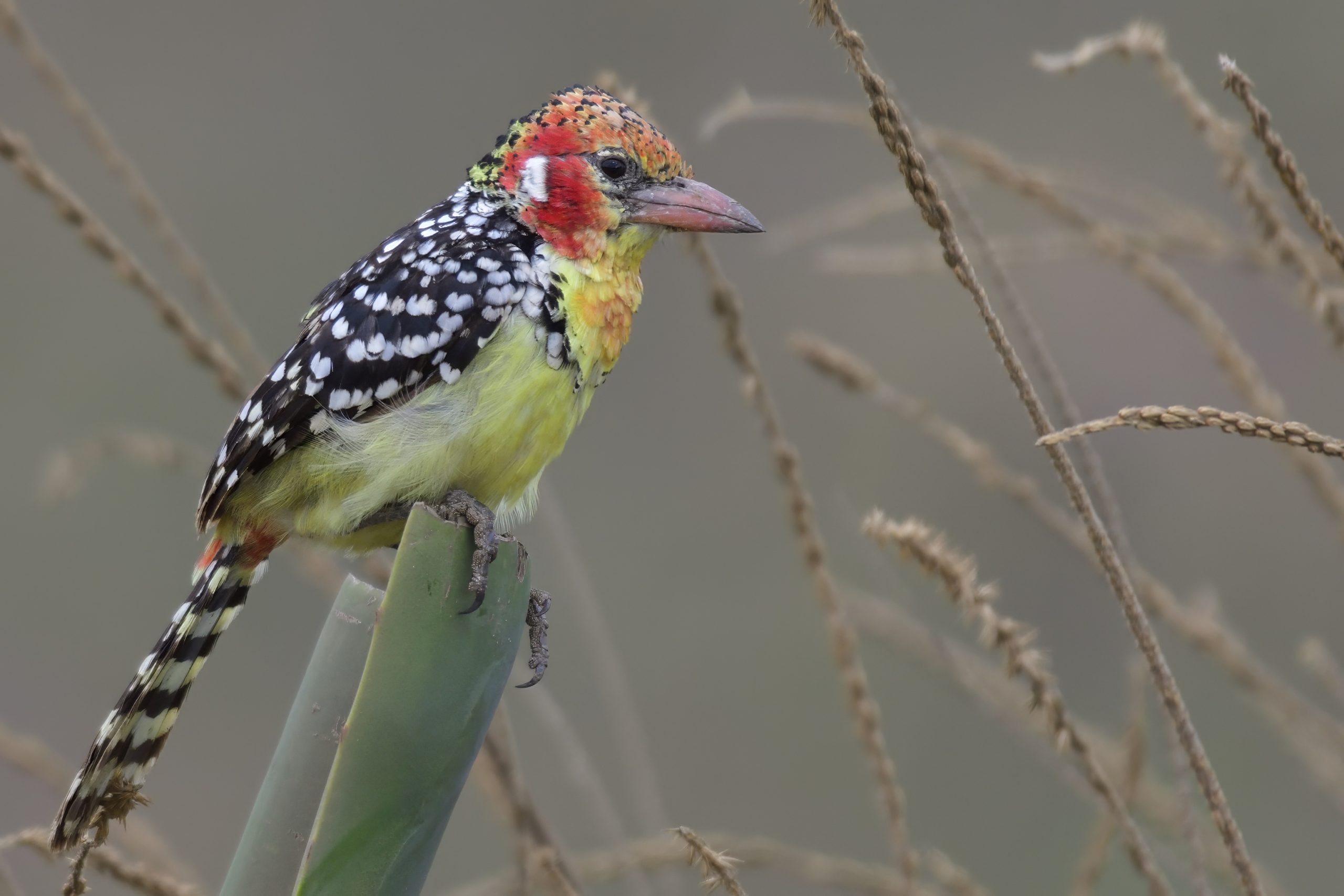
Red-and-yellow Barbet, Trachyphonus erythrocephalus, Endemic to NE Africa

Kenya Sparrow, Plasser rufocinctus, Endemic to Kenya and Tanzania

Variable Sunbird (Younf male?), Cinnyris vestus

Brown-crowned Tchagra, Tchagra australis

Young Male Baglafecht Weaver, Ploceus baglafecht

Speke´s Weaver, Ploceus spekei, Endemic to NE Africa
Day 3, Saturday, September 9: Kiligolf – Tarangire National Park and Karatu.
We started from home early in the morning and were close to the gate at around 08:00. We started birding on the way to the gate and stopped for several good birds including: Spur-winged Goose, Gabar Goshawk, Swahili Sparrow, Ashy Starling, Rufous-tailed Weaver, Mourning Collared Dove, White-headed Buffalo-Weaver, Von der Decken´s Hornbill, Yellow-collared Lovebird, Speckled Mousebird and Northern White-crowned Shrike. Once inside the park on our way to our breakfast spot we found the following species: Yellow-necked Spurfowl, Northern Pied Babbler, Tawny Eagle, Marabou Stork, Rüppel´s Vulture, Common Ostrich, Fischer´s Sparrow-Lark, Red-billed Quelea, Crowned Lapwing, Little Bee-eater, Bateleur, Pangani Longclaw, Buff-crested Bustard, Double-banded Courser, Egyptian Goose, Common Greenshank, Speckle-fronted Weaver, Blacksmith Lapwing, Helmeted Guineafowl, Tawny Eagle, Brown Snake Eagle, Lilac-breasted Roller and Wood Sandpiper. We had breakfast at my normal picnic site and continued on the north side of the river to our lunch site. Some of the new birds for the park: White-backed and Lappet-faced Vulture, Southern Ground Hornbill, Black-winged Kite, Red-necked Spurfowl, Greater Honeyguide, Little Stint, Eastern Grey Woodpecker, Verreaux´s Eagle-Owl, White-crested Helmetshrike, Nubian Woodpecker, Pearl-spotted Owlet, Barn Swallow, Ruff, Wattled Starling and Namaqua Dove. We had lunch and continued, but due to some mechanical fault with my car, we headed towards Karatu and picked up another car on the way. This is Africa (TIA) expect dust, very bad roads and an occasional break down. My cars always come straight from service before every trip, but shit happens.We might have missed a couple of birds in Tarangire, but I always have a back up plan. It was extra satisfactory to prove an uneducated “besser visser” of an Icelandic guy that I knew my cars so well that I could safely take it to my meeting point where the other car was waiting for us at the Makuyuni junction where we were going to Karatu. We swapped car and again TIA when we came to the hotel that Isihaka had booked a month before and confirmed the night before, the hotel were fully booked :-). We rented a boda boda driver (motor cycle taxi) to lead us to another place. We went to a local restaurant and had Njoma Choma a Swahili traditional dish that was not to the liking of my Icelandic friends. Mind you they eat rotten shark fins :-). It tasted fantastic for me. Another surprise happened the day after when the uneducated guy complained there had been a cricket and a coach roach in his room :-). This is Africa! 🙂

Rufous-tailed Weaver, Histurgus ruficauda, Endemic to N tanzania and S. Kenya
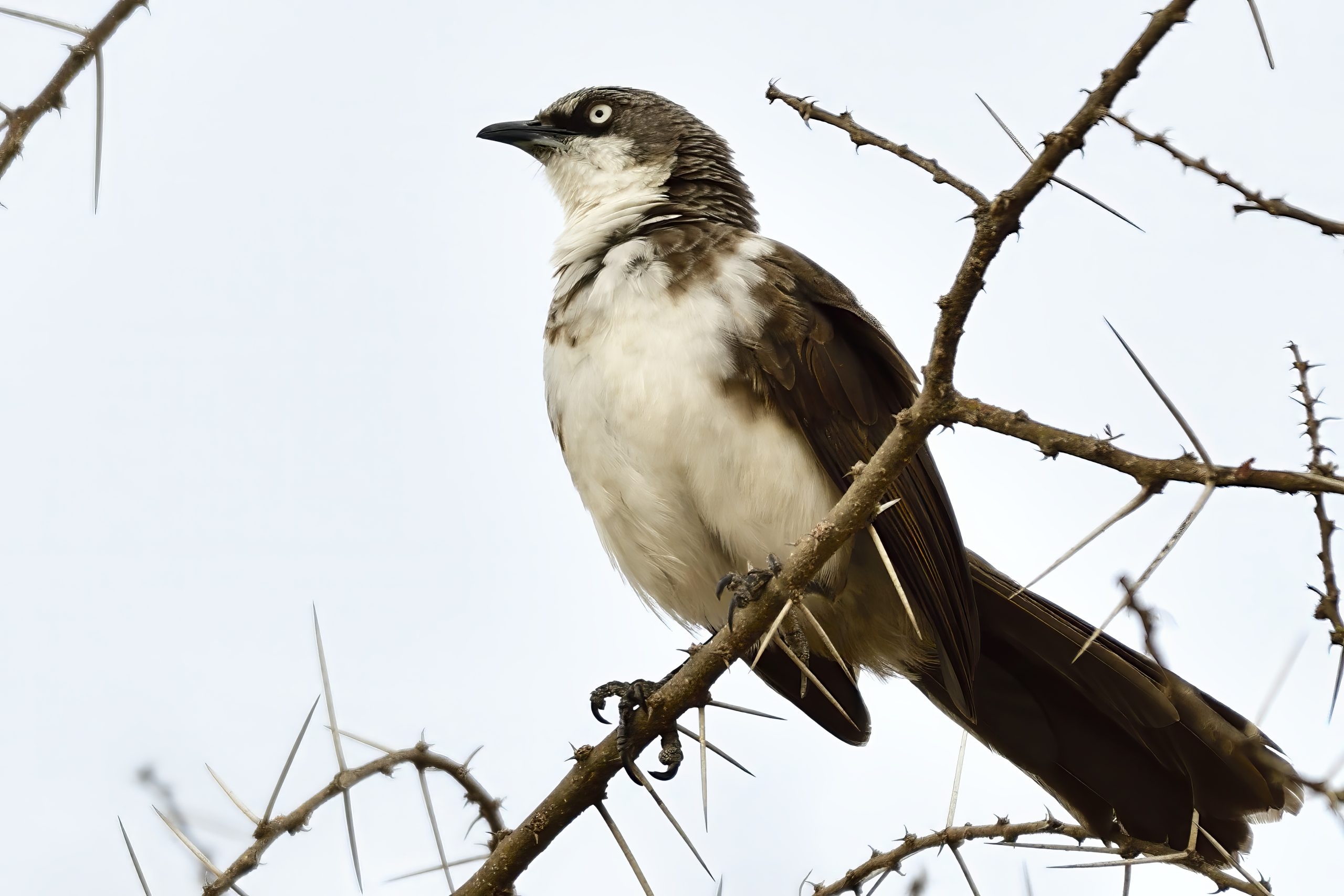
Northern Pied Babbler, Turdoides hypoleuca, Endemic to East Africa

Tawny Eagle, Aquila rapax

Brown Snake Eagle, Circaetus cinereus

White-headed Buffalo Weaver, Dinemella dinemella, Endemic to NE Africa

Black-winged Kite, Elanus caeruleus

Von der Decken´s Hornbill (Female), Tockus deckeni, Endemic to NE Africa

Von der Decken´s Hornbill, Tockus deckeni, Endemic to NE Africa
Day 4, Sunday, September 10: Karatu – Endoro Trail – Lake Eluanata, Nanja – Kiligolf
We started early and to my surprice the gate before the office were already open. Last time we walked up the steep hill and picked up some very nice birds. Those birds were higher in the forest too. This were only the second time I walked the Endoro trail and this time my friends were in better physical shape than last time. Isihaka meant that we did not need the local guide, but I decided to add him to our team since he knows the trail better than most birders: Here are some of the birds we saw on the hike: African Dusky Flycatcher, Bearded Woodpecker, Tambourine Dove, Brown-headed Apalis, Spectackled Weaver, Grey-capped Warbler, Mbulu White-eye, Red-throated Twinspot, Cinnamon-chested Bee-eater, Eastern Double-collared Sunbird, Thick-billed Seed-eater, Red-faced Cisticola, White-browed Scrub-Robin, Mountain Greenbul, Abyssinian Crimsonwing, Grey Cuckooshrike, White-eyed Slaty Flycatcher, African Hill Babbler, Bar-throated Apalis, Schalow´s Turaco, Purple-throated Cuckooshrike, Lemon Dove and White-tailed Blue Flycatcher. We had now reached the Elephant caves, but had to stop a little for some Buffalos to disappear. As soon as we were safe, we had Breakfast by the caves. On the way back to the entrance, we added Yellow-bellied Waxbill, Red-billed Oxpecker, White-necked Raven, Klaas´s Cuckoo and Black-fronted Bushshrike. We got in the car and drove down to the gate. Isihaka shouted stop and we got very nice views of a pair of Hildebrandt´s Spurfowls. Just before the main road, we stopped again for Northern Grey-headed Sparrrow and also had a stop on the main road for Fischer´s Lovebird. I stopped at the viewpoint from the ridge of the Rift Valley and we continued to Nanja and Lake Eluanata. At the lake we added: Palm-nut Vulture, Knob-billed Duck, Red-knobbed Coot, African Swamphen, Red-billed Teal, Common Sandpiper, Western Cattle Egret, Tawny Eagle, Black-winged Lapwing, Black-headed Heron, White-faced Whistling Duck and Grey Crowned Crane at the end of the Lake. We took a short cut back to the main road and arrived at home before dark as planned. Selvine had dinner ready and we enjoyed before again retiring early to bed.
Some pictures from Day 4:

Grey-capped Warbler, Eminia lepida, Endemic to East Africa

Eastern Double Sunbird, Cinnyris mediocris, Endemic to East Africa
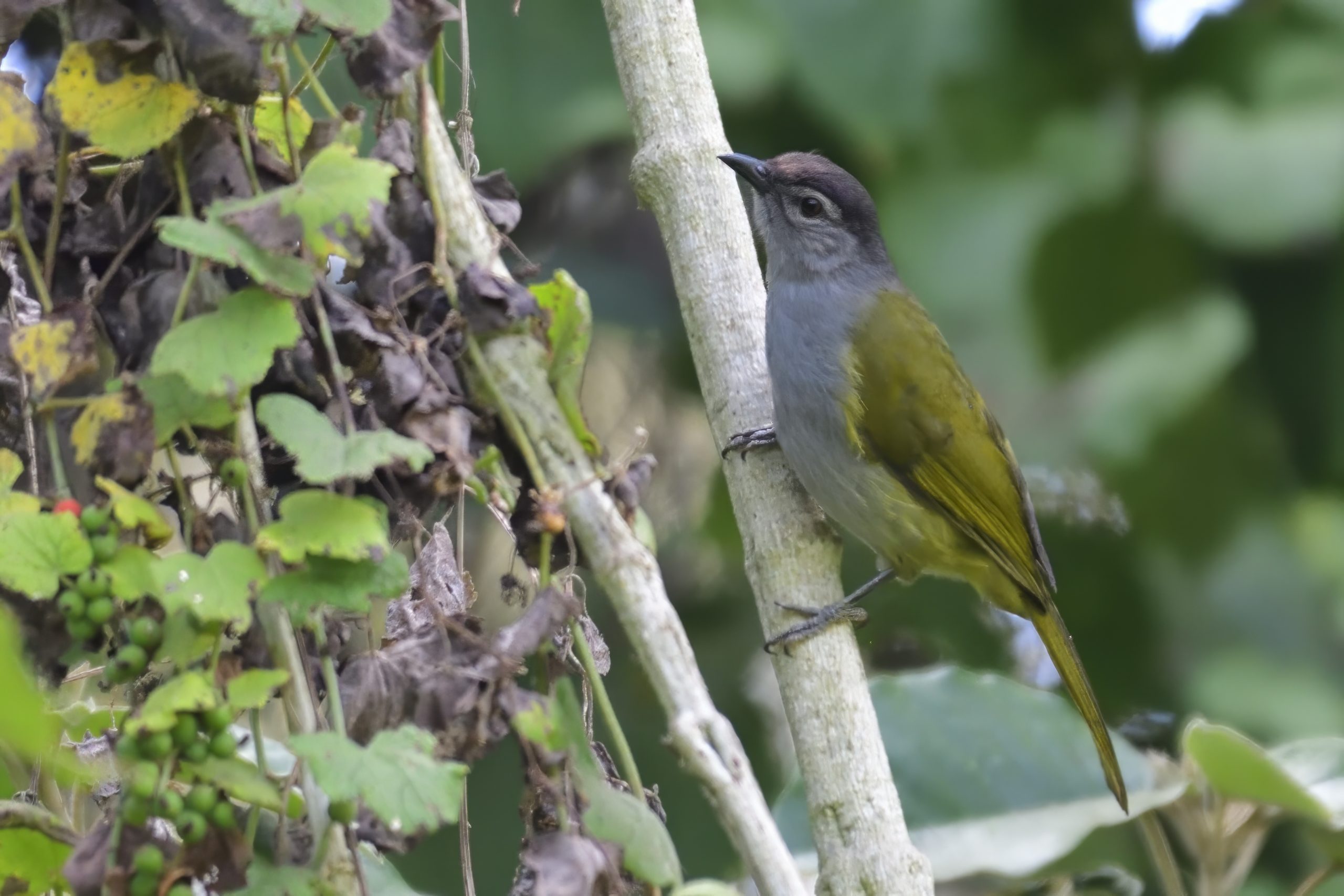
Mountain Greenbul, Arizelocichla nigriceps, Endemic to highland forests of S. Kenya and N. Tanzania

Hildebrandt´s Spurfowl (Female), Pternistis hildebrandti, Endemic to E Africa

Hildebrandt´s Spurfowl,Pternistis hildebrandti, Endemic to E Africa

Black-winged Lapwing, Vanellus melamopetrus

Black-headed Heron, Ardea melanocephala
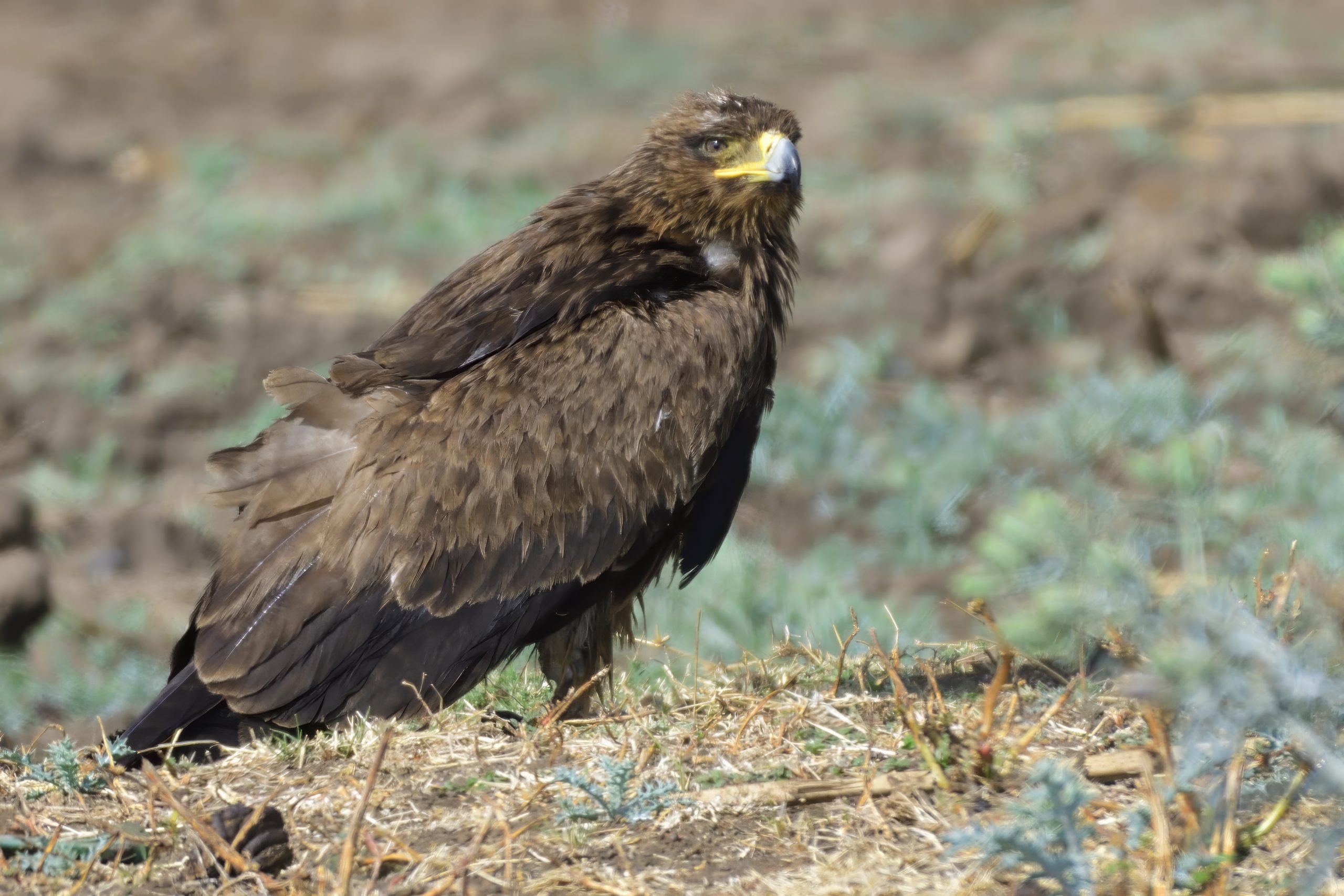
Tawny Eagle, Aquila rapax

Grey-crowned Crane, Balearica regulorum
Day 5, Monday, September 11: Kiligolf to Masai steppes and Shambalaya Dam via Merirano
Again, we had an early start. There is a short cut to Merarani via a not paved road. TIA, yes there are dust. One of my friends asked if there were another way, I said yes, but a long detour. He said if it were him he would have preferred the detour! At any rate we arrived at our birding destination a little after 07:00 as planned. It was clouded, so the light were not that good. Here are some of the birds we managed to pick up before breakfast: Violet-backed Starling, Beautiful Sunbird, Lesser Masked Weaver, Eastern Violet-backed Sunbird, Yellow-throated Bush Sparrow, White-headed Mousebird, Pink-breasted Lark, Hunter´s Sunbird, Scaly Chatterer, Golden-breasted Starling, Black-throated Barbet, Black-necked Weaver and Bar-eyed Thrush. It was a rather slow morning due to the weather. We parked at my normal stop for breakfast. After breakfast, Isihaka took my friends for a walk downhill. I drove my Land Rover down to wait for them. They picked up Tsavo Sunbird, Pringle´s Puffback, Acacia Tit and Northern Crombec. I only got pictures of a Red-fronted Prinia. We continued along the road to the first breeding colony of Black-capped Social Weavers. I stayed in the car but Isihaka shouted for me to come. I ran over since he had found another pair of Acacia Tits, a bird I had seen many times in Kenya, but never in TZ. We drove down to the Shambalaya dam and started getting a lot of shore birds including: Glossy Ibis, Long-toed and Spur-winged Lapwing, African Jacana, Black Heron, Red-billed Oxpecker, Red-billed and Blue-billed Teal, Whiskered Tern, Squacco Heron, African Openbill, Common Moorhen, Little Egret, African Spoonbill, Fulvous and White-faced Whistling Ducks and Pink-backed Pelican. On the way through Mererani, we found our first House Crow on the trip. I took the same route back with what I would call moderate dust. When we got home the Icelandic guy said, that my car was not working and that this was not what they had paid for and I needed to get another car. I did not want to argue so I organised another car and I agreed with the Icelandic people on their contribution to the extra cost. It was the dust the Icelandic guy was worried about. I tried to tell them that there would be not that much dust going forward but he insisted so we ended up in an old Toyota Landcruiser that was hell for me to drive compared to my trusted Land Rover that I have driven 130.000 km with in East Africa. Selvine had dinner ready for us and I retired early to bed.
Some pictures from Day 5:

Bare-eyed Thrush, Turdus tephronotus, Endemic to NE Africa

Pearl-spotted Owlet, Glaucidium perlatum

Scaly Chatterer, Argya aylmeri, Endemic to NE Africa

Golden-breasted Starling, Lamprotornis regius, Endemic to NE Africa

Red-fronted Prinia, Prinia rufifrons

Acacia Tit, Melaniparus thruppi, Endemic to NE Africa – TZ Lifer

Foxy Lark, calendulauda alopex, Endemic to NE Africa

Long-toed Lapwing, Vanellus crassirostris

Black Heron, Egretta ardesiaca

Black-winged Stilt, Himantopus himantopus

Knob-billed Duck (Female), Sarkidiornis melanotos

Red-billed Oxpecker, Buphagus erythrorynchus
Day 6, Tuesday, September 12: Kiligolf – Nyumba ya Mungu Dam – Same – South Pare Mountains – Same.
We had an early start. The know it all Icelandic guy were put in charge of the packing the car and off we went. I had to stop at the first petrol station since the car were delivered without diesel. The drive went smooth and we picked up Martin Joho, our guide for the Usambara at the junction to Nyumba ya Mungu Dam. At the dam, we had breakfast and looked for birds. Our main target were African Skimmer. I have never dipped on this bird, but this time I drove longer than I have ever driven before and no signs of them. There were a lot of people out and about so that might have been the cause. Here are some of the new birds for the trip we did see: Kittlitz´s Plover, Little Grebe, Western Osprey, Great White Pelican, Gull-billed Tern and Grey-headed Gull. We drove on to Same and arrived a little early for lunch, so I made a small detour and we picked up D´Arnaud´s Barbet. We checked in to Elephant Lodge had lunch and were ready for South Pare Mountains at 15:00. On the way, we picked up Grey Wren-Warbler. At our normal spot for the White-eye, it was very quiet, but suddenly many South Pare White-eyes crossed the road. Everyone got good views. In recent years there are also Pale White-eyes up there. Again, it was quiet and we heard quite a few birds, but I only took down seen birds for my friends so these are the birds we saw: Red-backed Mannikin, Cape Robin-Chat, Usambara Double-collared Sunbird and Bar-throated Apalis.

Kittlit´z Plover, Charadrius pecuarius

D´Arnaud´s Barbet, Trachyphonus darnaudii, Endemic to NE Africa
Day 7, Wednesday, September 13: Same to Magamba Forest
We did our early morning birding near Same before we returned to the hotel for breakfast. Here are some of the birds we saw that morning: Greater Honeyguide, Red-winged Starling, Southern Black Flycatcher, Parrot-billed Sparrow, Red-bellied Parrot, Lesser Striped Swallow, Tiny Cisticola, Chinspot Batis, Black-bellied Sunbird, Red-headed Weaver and Eastern Black-headed Batis. We had breakfast, packed up our car and were soon on our way to Magamba Forest, West Usambara. Just before Soni, I have a special stop at a police control point. The police there knows me and often they help us locate the birds. Here are some of the birds we saw: Black-backed Puffback, Eastern Golden Weaver, Grey Olive Greenbul (nicely perched), White-eared and Spot-flanked Barbet. We continued to Soni where I sent Martin to buy veggies while I organised Bread, cookies, water and matches (I always have matches in my Land Rover, so I was lucky that I remembered). We continued up, passed Lushoto, stopped briefly at the gate to Magamba Forest and were in camp around 14:30. Martin and I sat up camp. I started boiling the chicken and at 15:30 we were ready for a bird walk. We decided to walk up from camp because the light is better there in the afternoon. Here are some of the birds we saw: White-starred Robin, African Stonechat, Usambara Thrush, Moustached Tinkerbird, Palm-nut Vulture, Stripe-faced Greenbul, Red-faced Crimsonwing, White-tailed Crested Flycatcher, Red-capped Forest Warbler and Yellow-throated Woodland Warbler. I left the boys early and hurried down to prepare the meal. Martin came and helped shop the vegetables and we had a nice chicken stew with pasta. We ate around the campfire and I took the opportunity to have a nice warm shower after dinner. We all soon went to our tents.
Some pictures from Day 7

Grey Olive Greenbul, Phyllastrephus cerviniventrus

Usambara Thrush, Turdus roehli, Endemic to Usambara and pare mountains NE Tanzania

Stripe-faced Greenbul, Arizelocichla striifacies, Endemic to S. Kenya and Tanzania
Day 8, Thursday, September 14: Magamba Forest
We had coffee at 06:45 and went out a little after 7. here are some of the birds we registered on our morning walk: Mountain Buzzard, Green-backed Honeybird, Fülleborn´s Boubou, African Hill Babbler, Usambara Weaver, Sharpe´s Starling, Usambara Akalat, Bar-tailed Trogon, Evergreen Forest Warbler, Black-headed Apalis and Crowned Hornbill. I left the guys on top of the forest and went down to prepare breakfast only to find out that a pair of White-necked Ravens had stolen all our 20 eggs! I managed to make a breakfast without eggs, but ordered fresh eggs for the day after. The boys were back around 10:00 and we all had breakfast. The afternoon were dedicated to the path along the lake. It was very quiet and we only heard one Spot-throat calling, no sign of the Usambara Akalat. When we came down from the mountain we got: Olive Woodpecker and Southern Citril. I also managed a long distance shot of a Red-faced Crimsonwing. We returned to camp and had lunch. We took our chairs to the edge of the camp ground and I helped the guys find the following birds: Southern Citril, Yellow-bellied Waxbill and Cinnamon Bracken Warbler. At around 16:00, we decided to walk downhill. It were very quiet, so we only picked up Eastern Bronze-naped Pigeon, Waller´s Starling and African Goshawk. Again, I left the boys behind and hurried back to camp to get dinner ready. Dinner were left overs from yesterdays Chicken stew and it tasted even better that night. My Icelandic friends decided for a shower and I am not sure what they did wrong because they had cold showers. I was number 3 in line and let the water run long enough and had a beautiful warm shower. Also Martin had a warm shower. The icelandic said they were used to cold showers so they did not mind. We retired early to our tents.
Some pictures from Day 8:

Usambara Weaver, Ploceus nicolli, Endemic to Eastern Arc Mountains of Tanzania

Sharpe´s Starling, Poeoptera sharpii, Endemic to NE Africa

Usambara Akalat, Sheppardia montana, Endemic to West Usambara Mountains, Tanzania
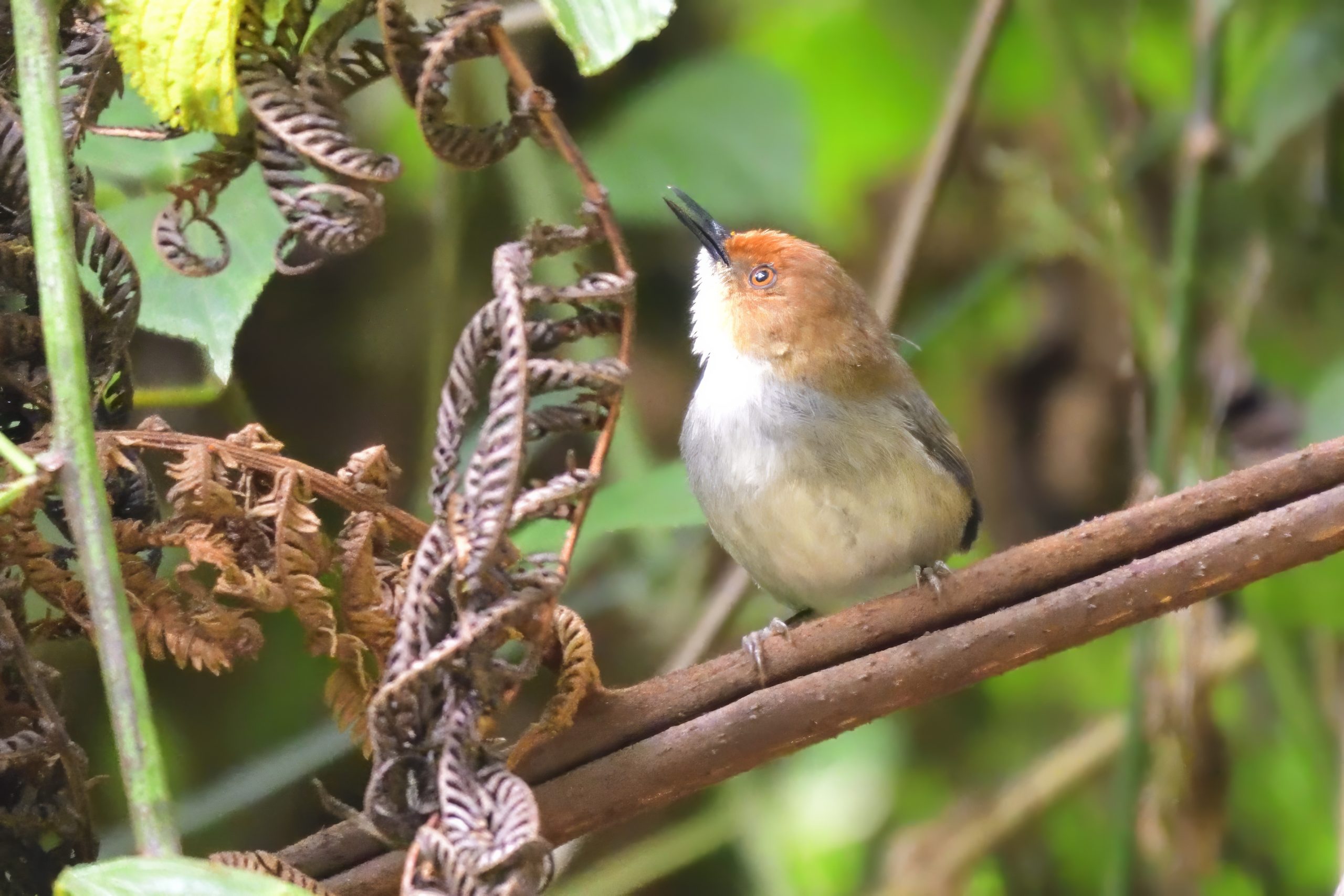
Red-capped Forest Warbler, Artisornis metopias, Endemic to Estern Arc Mountains of Tanzania and N. Mozambique

Red-faced Crimsonwing, Cryptospiza reichenovii

White-necked Raven, Corvis albicollis

Usambara Double-collared Sunbird – Cinnytis usambaricus, Endemic to S. Pare and Usambara Mountains in Tanzania
Day 9, Friday, September 15: Magamba Forest West Usambara to Amani Forest East Usambara.
Again we had our 06:45 Coffee. We decided to go uphill again and only added two new birds: White-chested Alethe and African Olive Pigeon. This time I had eggs so I made breakfast packed camp and Martin said he knew a spot for Spot-throat close to the entrance. we were there around 10:45. First new bird were a Common Waxbill before Martin took us to the Spot-throat place. This is a bird I have tried to take pictures of for more than 10 years and wonder over all wonders this time I actually succeeded. Not the best picture, but still a picture. We drove down the mountain to pick up Isihaka that had never been to Amani before. While reaching Mombo, somone pointed out we had a flat tire and led us to a dodgy place. They removed the tire and I asked where would you fix it. They took it to a garage next door (where we of course could have stopped and got it fixed). They put the tyre back on and I asked how much. They said tsh 35.000. I started laughing. A repair like that cost tsh 5.000 (USD 2) he wanted USD 14. I felt generous and offered him Tsh 10.000. He would not dodge, so I put the 10.000 in my pocket and we drove on. In the mean time I sent Martin to get us Chapati for the trip. We picked up Isihaka at the bus station and passed Korogwe and Segera. I stopped in Mheza to buy some sodas, but they were totally out. The next stop were our normal stop for Coastal Cisticola. I could hear them calling from the car. I stayed behind to watch the car. In addition to the Cisticola they also got the first Red-backed Mannikin of the trip. We drove straight to camp and was greeted by the normal armada of Silvery-cheeked Hornbills. I had been driving for a long time and had a nice refreshing shower before we were out birding in the Botanical garden near the head quarters. Here are some of the birds we saw: Green Barbet, Waller´s Starling, Banded Green Sunbird, Lanner Falcon, Purple-banded Sunbird, Moustached Tinkerbird, Trumpeter Hornbill, Green Tinkerbird, Black-and-white Shrike Flycatcher, Black-bellied Starling, Brown-hooded Kingfisher and at night I heard the Usambara Eagle-Owl call. My friend Robert were there and made sure we had a nice meal. I retired early to my room and started downloading and editing pictures, then heard the Eagle-Owl, but no interest amongst my Icelandic friends that were sound asleep.
Some Pictures from Day 9

Cinnamon-bracken Warbler, Bradypterus cinnamomeus

Spot-throat, Modulatrix strictigula, Endemic to Eastern Arc Mountains – Picture Lifer

Banded Green Sunbird, Anthreptes rubritorques, Endemic to Eastern Arc Mountain, Tanzania

Green Tinkerbird, Pogoniulus simplex, Endemic to SE Africa
Day 10, Saturday, September 16: Amani Forest.
As normal, we had coffee at 06:45. That day we were going further up in the hunt for some special birds. One of them, Half-collared Kingfisher were sitting nicely on a rock by the river. a little later, Martin told me to stop and we had good views of a Southern Banded Snake Eagle. Martin had been busy for the last couple of years so it had been a long time since he had been my guide. We had both found new spots over the years. At a certain bridge we stopped and looked for the East Coast Boubou and for sure a pair popped out. We continued and stopped at my normal spot and took an easy walk. Here are some of the birds we found: African Green Pigeon, Common Square-tailed Drongo, Green-headed Oriole, Shelley´s Greenbul, Yellow-streaked Greenbul, Olive Sunbird, Fischer´s Turaco. We returned close to the car which is the prime habitat for the Long-billed Forest Warbler. We found it quite easy (I have been struggling with that on my last trips). The last target, Kretchmer´s Longbill proved harder to find, but in the end it revealed itself. Other birds at the site included Uluguru Violet-backed Sunbird, Cabanis´s Bunting and Little Greenbul. We had cleaned up that area and were ready for our next target, the Sharpe´s Akalat. I was a little nervous to drive up the path with the clumsy Land Cruiser, but remembered a turning spot right after a prime habitat. I turned tha car and when I cought up with them they had already had views of the Akalat. We continued down the forest, but no more Akalats to be heard or seen. We did however see a Red-tailed Ant Thrush. I had a cut off date in order to be back for lunch. We just reached the lower part of the forest when I got them all in the car again. We were back to camp for lunch and had a Dark-backed Weaver nest right in front of us. After lunch, we did the Botanical garden again. We picked up African Harrier-Hawk, Pale Batis, Red-rumped Swallow, Little Swift, Kenrick´s Starling and Southern Citril. The boys decided to walk back to camp and I was stopped by my rasta friends that had discovered a snake they wanted me to take a picture off. I could not see it it was so small, but eventually one of my rasta friends almost touched it and then I finally got it an Usambara Vine Snake, actaully very poisenous, but not agressive at all. We were back in camp a little early. Erling and I were looking for an overflying Olive Ibis, but no such luck. We met up for dinner and I retired early to my room to work on my pictures.
Some pictures from Day 10

Half-collared Kingfisher, Alcedo semitorquata

Long-billed Forest Warbler, Artisornis moreaui, Restricted to East Usambara, TZ and Sierra Jeci, N Mozambique

Dark-backed Weaver, Ploceus bicolor

Usambara Vine Snake
Day 11, Sunday, September 17: Amani Forest
Coffee again at 06:45. That morning we were heading down to Zigy Forest, the lowland forest of Amani. Here are some of the birds we saw: Little Yellow Flycatcher, Green Twinspot, Blue-mantled Crested Flycatcher, Chestnut-fronted Helmetshrike, Plain-backed Sunbird, Black-winged Red Bishop, African Golden Oriole, Fischer´s Greenbul, Little Spotted Woodpecker, Klaas´s Cuckoo and Mombasa Woodpecker. We walked on a little longer before I discovered that my Icelandic friends were struggling with the heat. I suggested that we should go back to camp which they readely agreed upon :-).
We went back to camp, relaxed had lunch and was ready for a new outing around 15:30. Marting suggested a spot I had only been to a few times, the alternative were the botanical garden again. We did not see many birds, but registered Mosque Swallow, Black-headed Batis, fantastic views of Fischer´s Turaco and struggled a long time, but finally got views of a Little Rush Warbler.
We returned to camp, freshened up and had dinner. Again, we retired early to bed.
Some pictures from Day 11:

Blue-mantled Crested Flycatcher, Troshocercus cyanomelas

Plain-backed Sunbird, Anthreptes reichenowi, Endemic to East Coast of Africa

Yellow-streaked Greenbul, Phyllastrephus flavostriatus, Endemic to SE Africa

Fischer´s Greenbul, Phyllastrphus fischeri, Endemic to coastal SE Africa
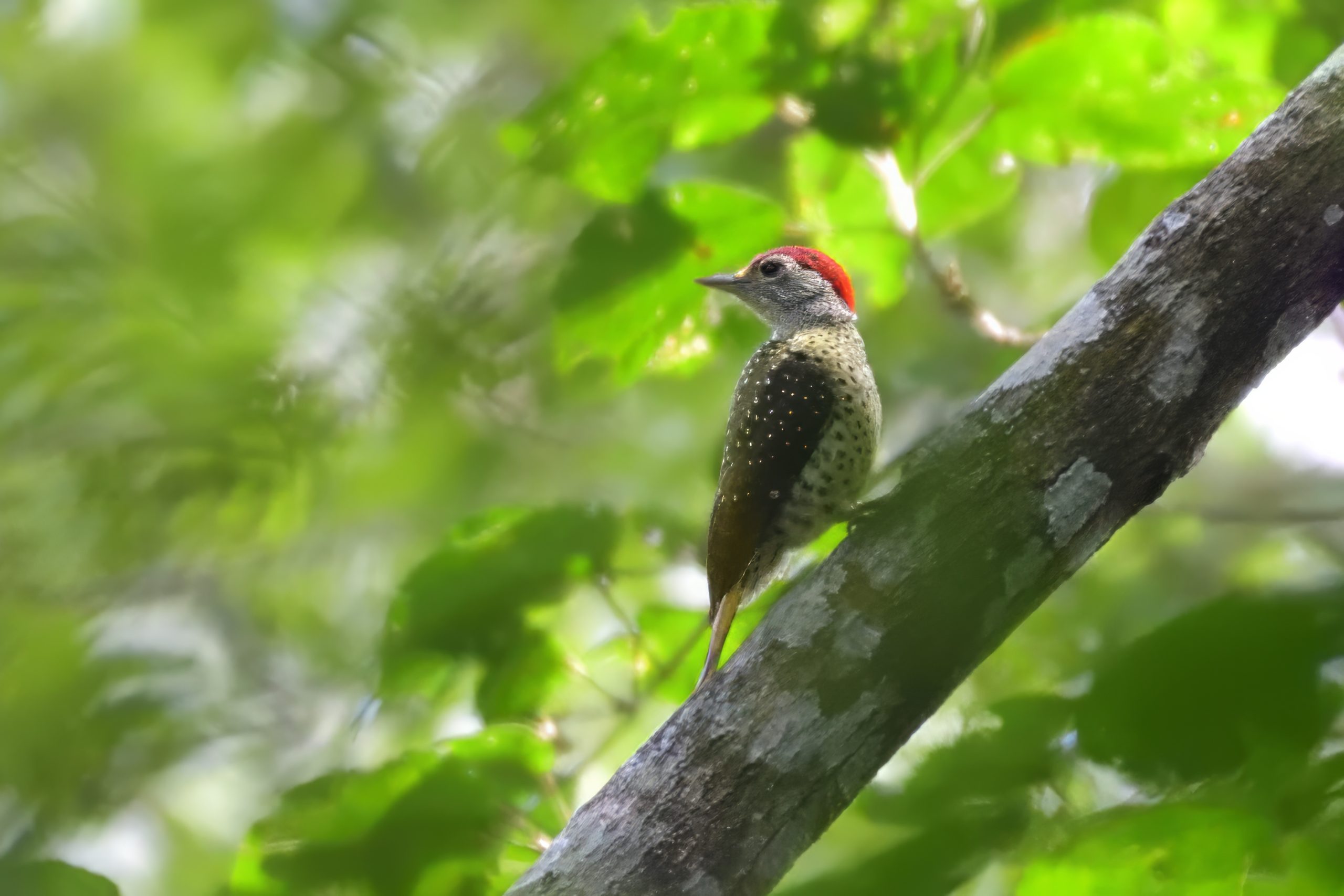
Little-spotted Woodpecker, Campethera cailliautii
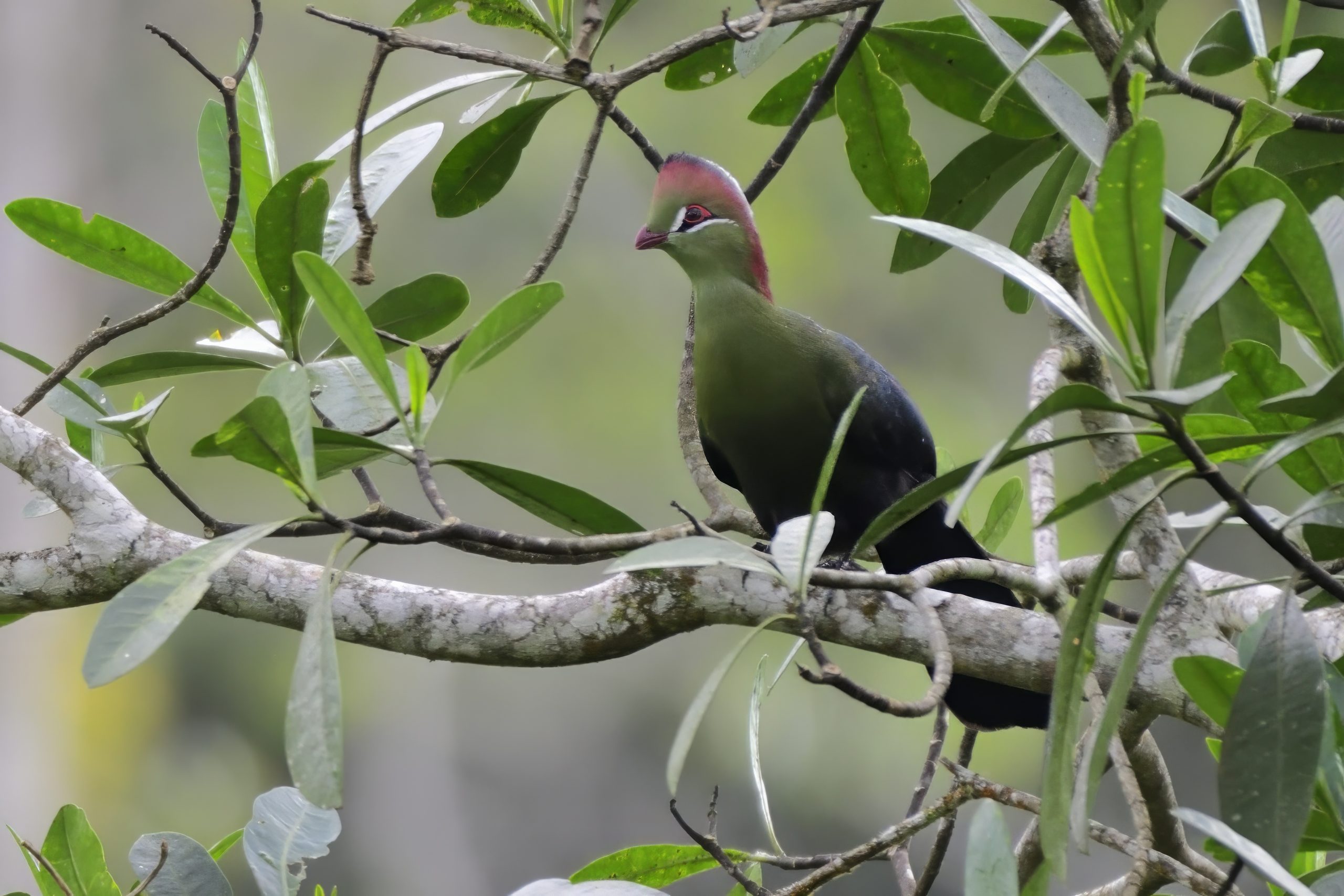
Fischer´s Turaco, Tauraco fischeri, Endemic to coastal E Africa

Black-headed Apalis, Apalis melanocephala, Endemic to SE Africa
Day 12, Monday, September 18: Amani Forest and all the way back to my home at Kiligolf.
I told the guys to be packed up at 06:30 this morning. We had coffee as normal 06:45. Besides packed breakfast, Robert had also organized Chapati for us as lunch. We drove down to the Lowland forest Zigi again. We dipped on the Tanzanian Illadopsis the day before, but found it that day. We started walking down the road and picked up some other birds: Forest Batis, Lowland Tiny Greenbul, Ashy Flycatcher, Green Malkoha and Ayre´s Hawk Eagle.
The time were ready to start our long journey home. I stopped in Muheza to fill Diesel, but no Diesel to be had. I pushed on to Korogwe and filled up. The rest of the journey were not that eventful and we arrived home around 17:00. I desperately needed a shower and we soon after assembled for dinner. Again, an early evening.
Some pictures from Day 12
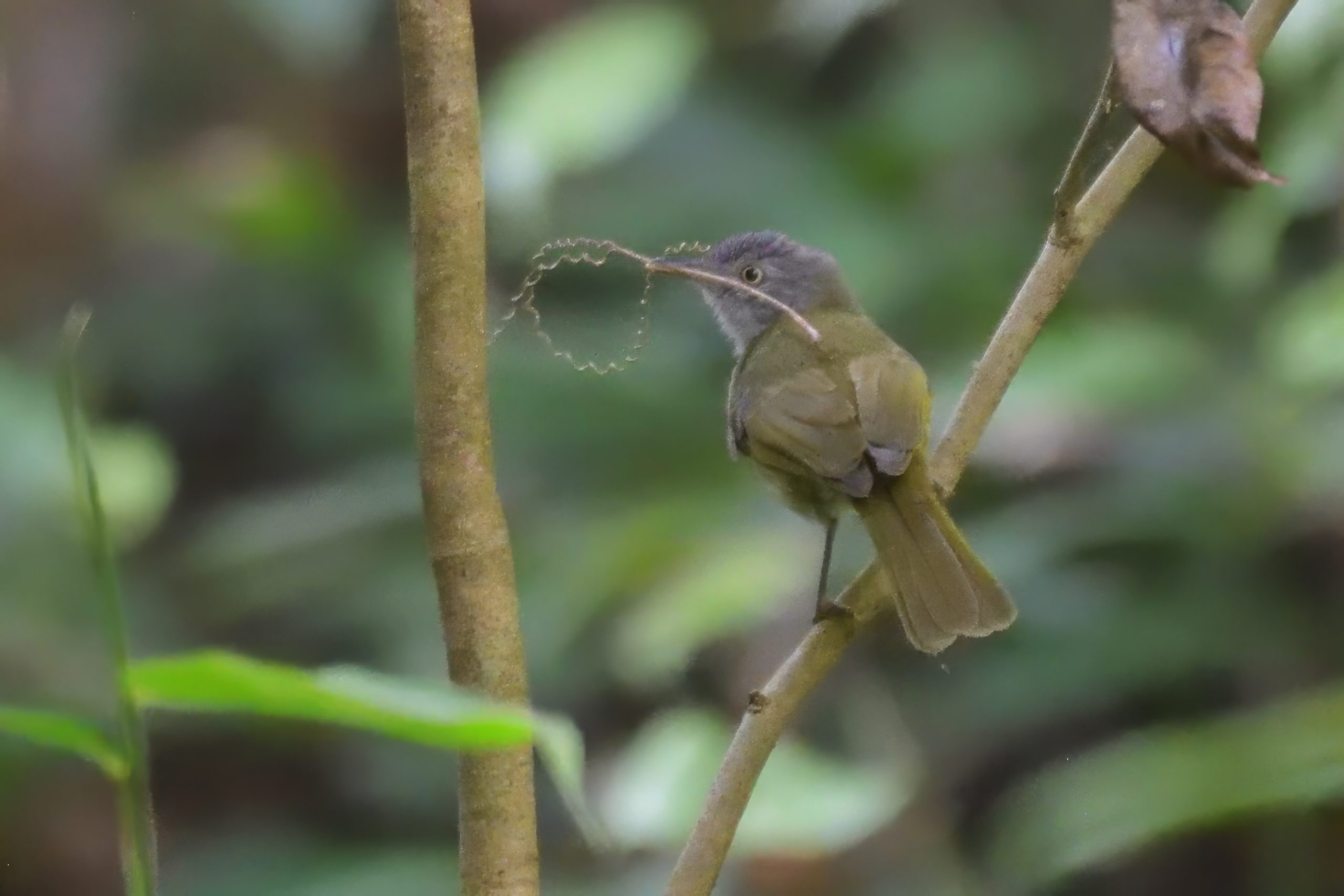
Lowland Tiny Greenbul, Phyllastrephus debilis, Endemic to coastal SE Africa

Green-headed Oriole, Oriolus chlorocephalus
Day 13, Tuesday, September 19: Ngarasero, Meru Forest and Kalinga Forest
We had no hurry this morning. We drove up first to Ngarasero Lodge. We were lucky to find a Malagasy Pond Heron. Other birds included: African Black Duck, Rüppel´s Robin-Chat, Thick-billed (and Taveta) Weaver, Black-throated Wattle-eye, Hamerkop and Mountain Wagtail. We dipped on Pygmy Kingfisher and Intermediate Egret.
Our next destination were Meru Forest. My last experience there were not good, since obviously the trail is inside Arusha national Park. We stopped buy the gate to look for Tacazze Sunbird, but no luck in finding it, we heard Hunter´s Cisticola and Isihaka saw it, but my friends not, so the only new bird we added were Broad-ringed White-eye. Our next stop were Kalinga Forest. When we came to the office, the lady were out for lunch. I suggested to come back another day to pay which she agreed to. Just before the forest we stopped for a colony of Village Weaver´s. Inside the forest we added Red-chested Cuckoo, Narina Trogon, African Emerald Cuckoo and Red-throated Twinspot.
We drove home, relaxed and had a nice dinner.
Some pictures from Day 13:

Hamerkop, Scopus umbretta

Mountain Wagtail, Motacilla clara
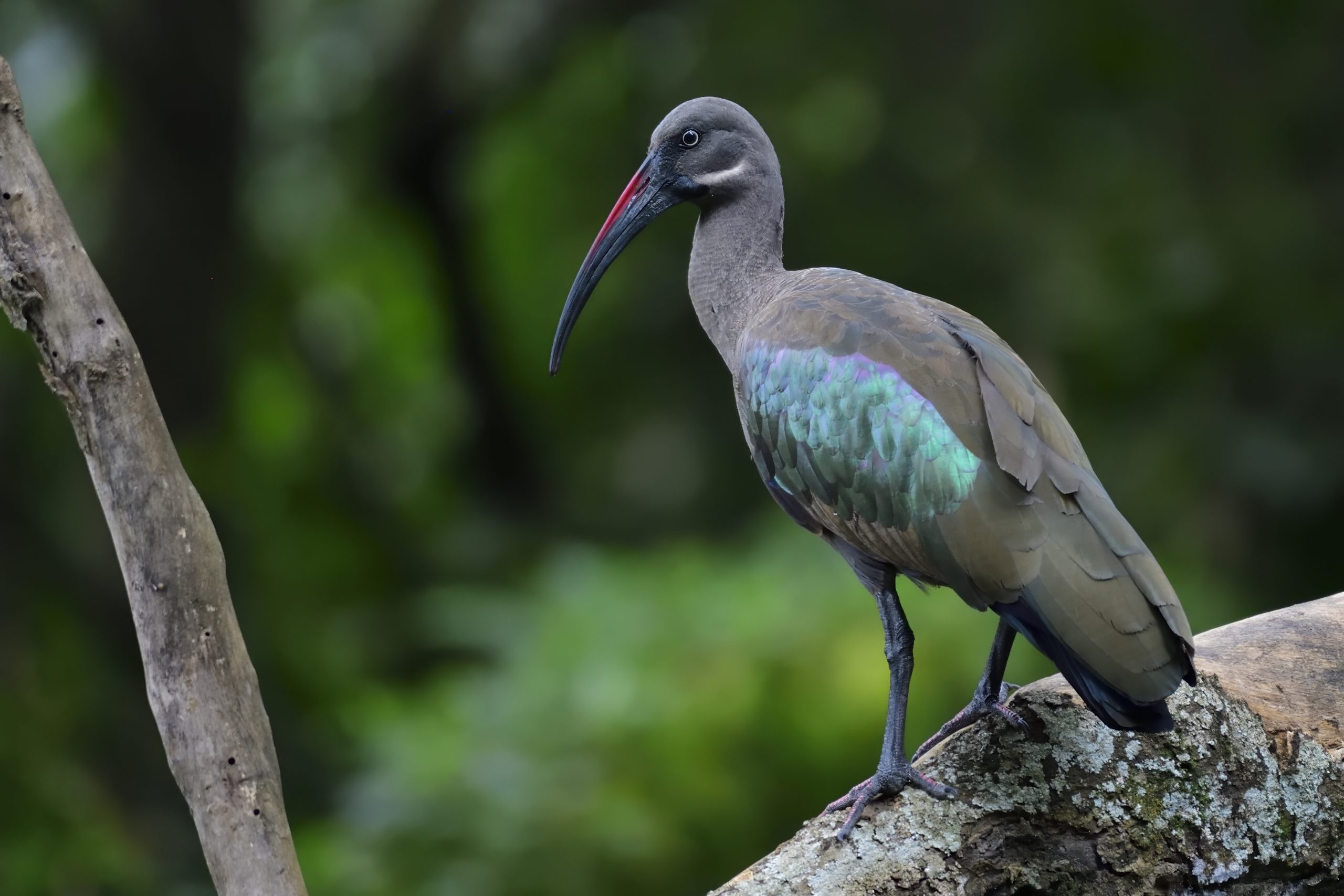
Hadada Ibis, Bostrychia hagedash
Day 14, Wednesday, September 20: my home – Arusha NP – My home
We had a late morning since the gate of Arusha NP is supposed to open at 6:30, but there are never anyone there before 07:00. It was a very slow day in the park. We picked up Trilling Cisticola on the way to the museum, but nothing besides an African Goshawk, Silvery-cheeked Hornbill, Kenrick´s Starling and Harlaub´s Turaco up both sides of Ngurduto Crater. We had breakfast at our normal spot.
We drove on toward the lake and had beautiful views of a Mountain Buzzard. The wetlands were dry, so only when we came to the grasslands we started picking up new species: Martial Eagle, Rufous-naped Lark and Short-winged Cisticola. We drove around the lakes and added Southern Pochard, Winding Cisticola and a Surprise African Marsh Harrier, Crimson-rumped Waxbill, Brown-throated Martin, White-breasted Cormorant, Lesser Flamingo, Cape Teal, Greater Flamingo, Pied Avocet. and Moccoa Duck. We had done our circle around the lake and this time no sign of the Moustached Grass Warbler. We continued towards Mt. Meru and stopped at my special spot for African Crowned Eagle. It did not take long before 2 induviduals showed up. The roads up there are not specially good, so I could not refrain my self from asking the Icelandic “know it al” guy if he were happy we had the Land Rover and not the Land Cruiser and to my surprise he agreed :-). We passed the Fig tree and continued up to the waterfall. We had a pair of Abyssinian Crimsonwing crossing the road. The waterfall, where we had lunch were very quiet. On the way down, we had a pair of Oriole Finch, Grey-headed Nigrita, White-eared Barbet, White-starred Robin, Ciinamon Bracken Warbler and at the Fig tree Bar-tailed Trogon. We were supposed to bird a while around the fig tree, but Isihaka were suddenly aware of a herd of Buffalos close to the car, so we slowly withdrew to the car and started on our downhill drive. I drove extremely slow towards the gate, but nothing new were seen. We retuned home, had dinner and retired early.
Some pictures from Day 14
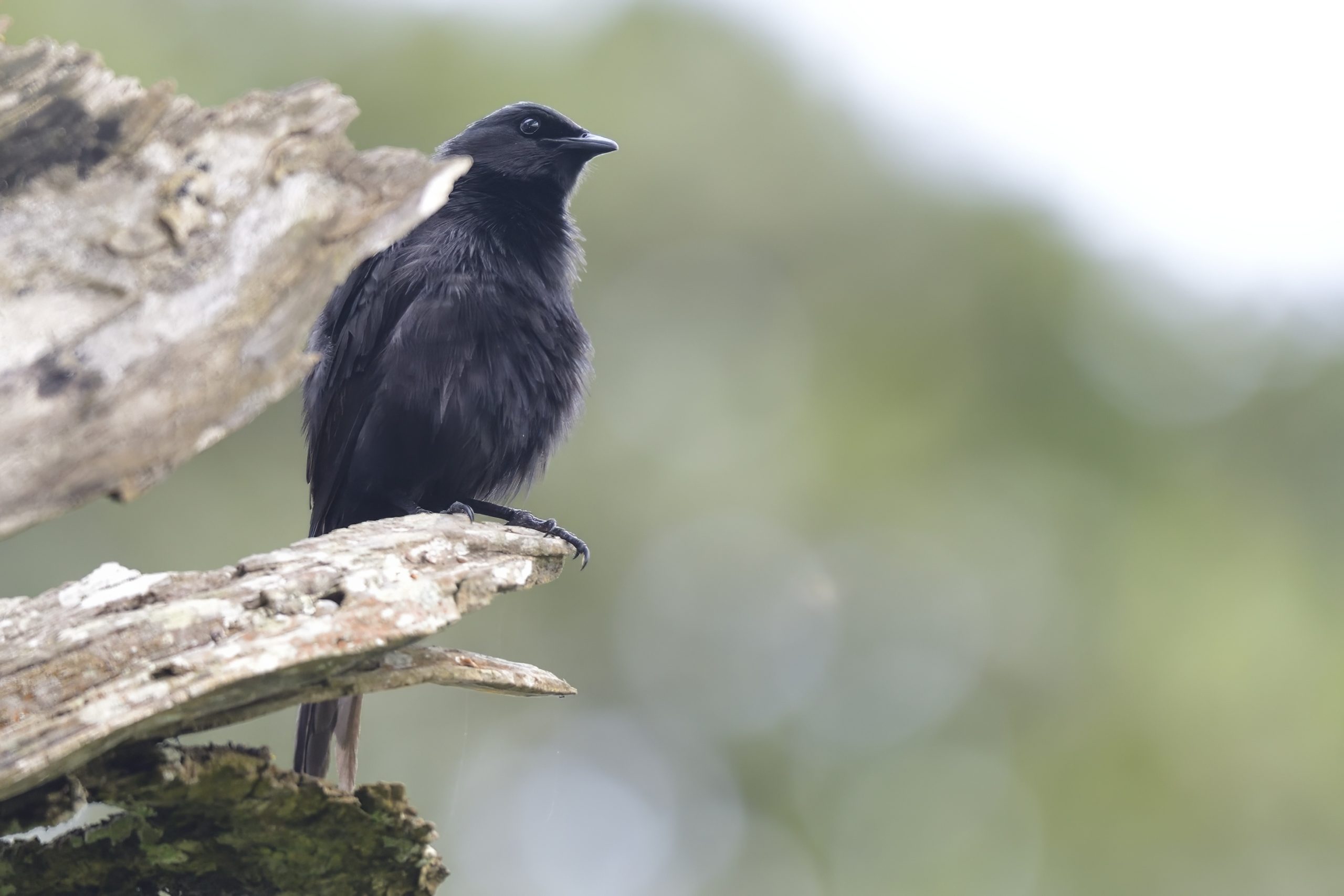
Kenrick´s Starling, Poeoptera kenricki, Endemic to East Africa
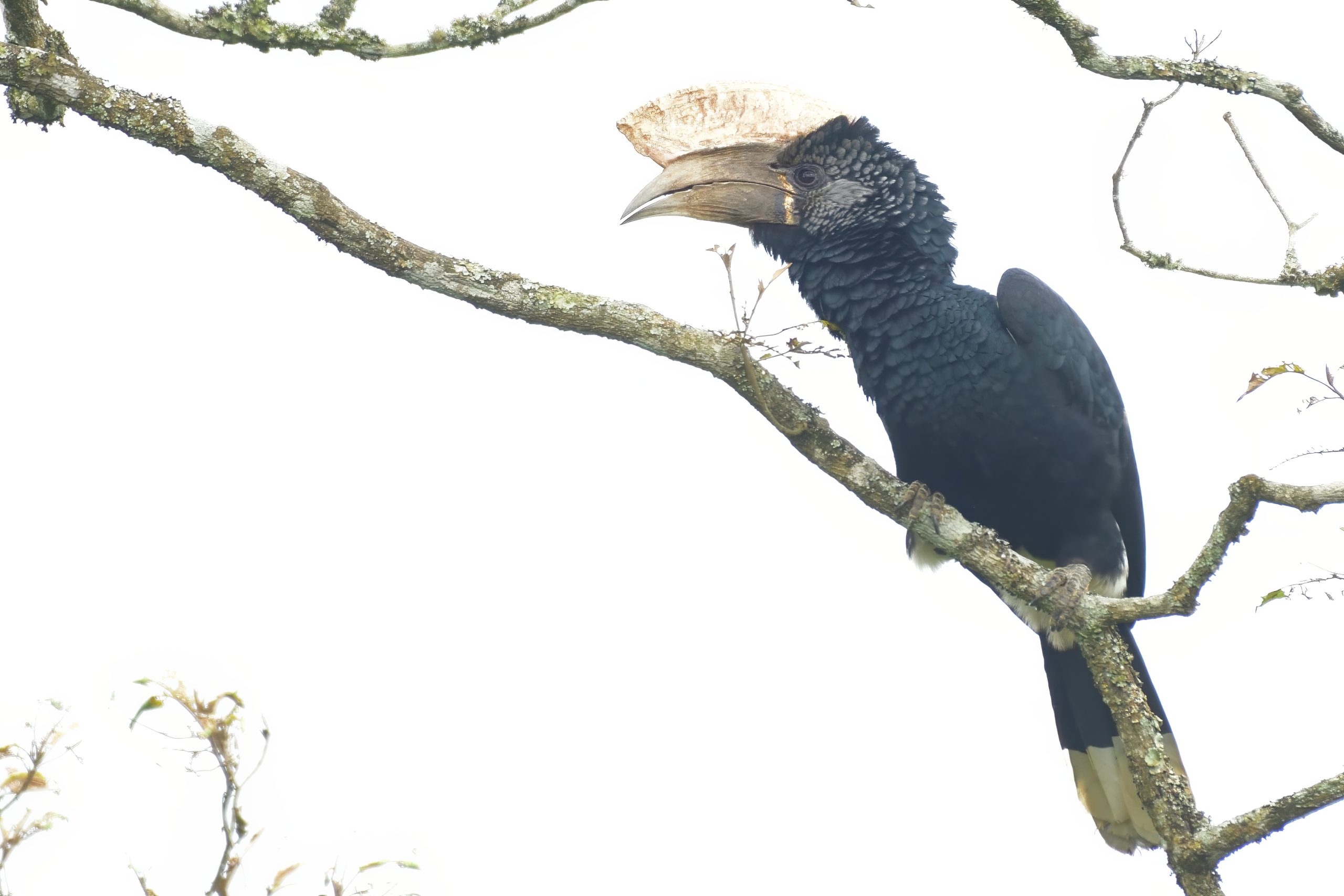
Silvery-cheeked Hornbill, Bycanistes brevis

Mountain Buzzard, Buteo, oreophilus Endemic to NE Africa

Martial Eagle, Polemaetus bellicosus

African Marsh Harrier, Circus ranivorus

Wood Sandpiper, Tringa glareola

Cape Teal, Anas capensis

Lesser Flamingo, Phoeniconaias minor

Greater Flamingo, Phoenicopterus roseus

Oriole Finch (male), Linurgus olivaceus

Oriole Finch (Female), Linurgus olivaceus

White-eared Barbet, Stractolaema leucotis
Day 15, Thursday, September 21: Kiligolf – Airport
That day, we decided to bird the upper part of the Golf Course. It was a slow morning, but we managed to pick up some new birds: African Yellow Warbler, Bronze Mannikin (the first of the trip!), Pin-tailed Whydah, Northern Brownbul, Violet-backed Starling, Purple Grenadier, Yellow-fronted Canary, Reichenow´s Seed-eater and by the car I saw a Bare-eyed Thrush. We were now back at the club house. I suggested that I took the car home and they walked home to pick up a few birds we had missed. They dipped on the Greater Painted Snipe, but got both Giant Kingfisher and Pallid Honeyguide. We all had breakfast and we relaxed on my balcony until it were time to drive them to the airport.
Some pictures from Day 15:

Northern Brownful, Phyllastrephus strepitanz, Endemic to NE Africa

Red-checked Cordon-bleu (female), Uraeginthus bengalus

Purple Grenadier, Purple Grenadier, Granatina ianthinogaster, Endemic to NE Africa
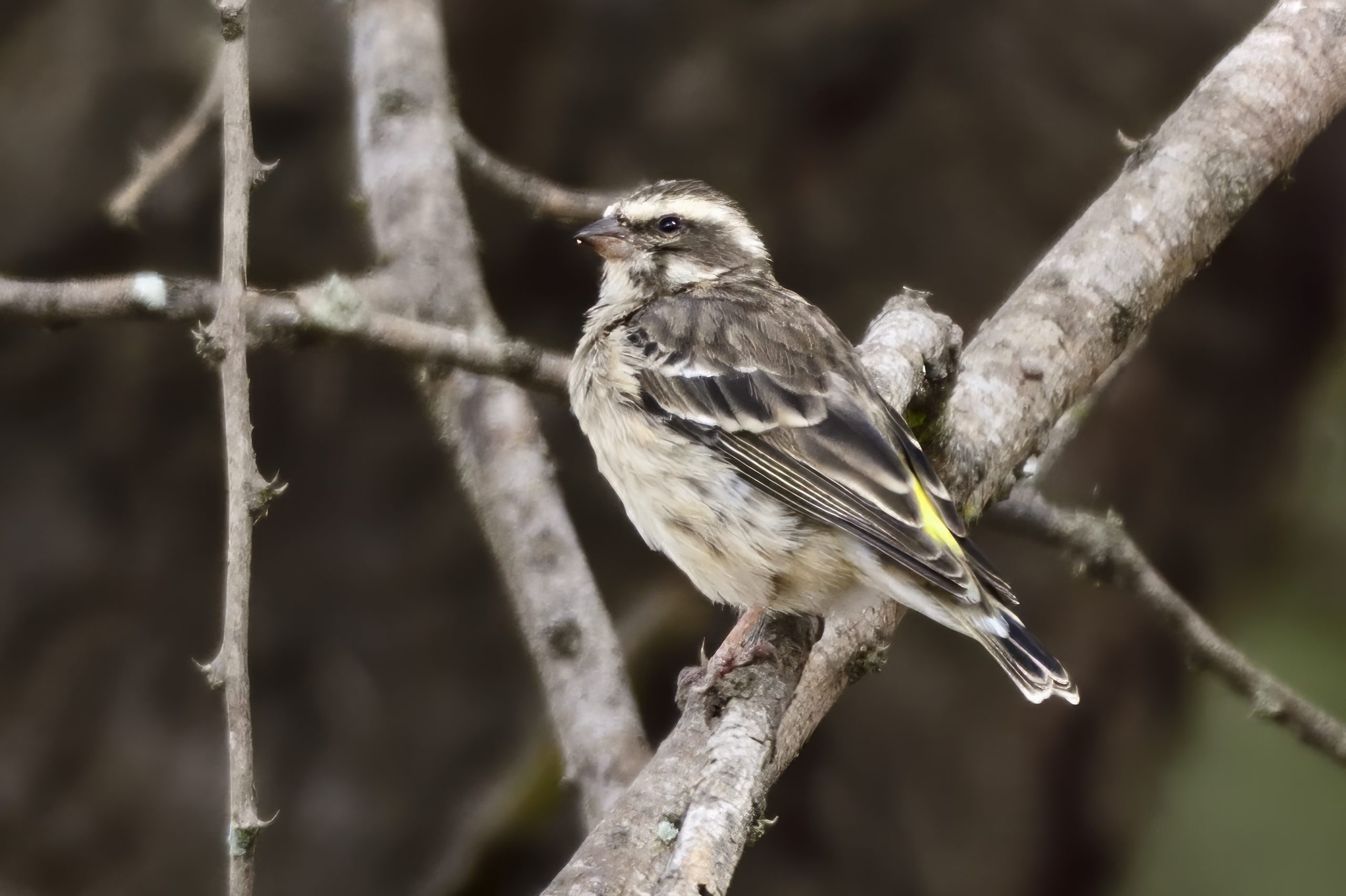
Reicenow´s Seedeater, Chritagra reichenowi, Endemic to NE Africa

Bare-eyed Thrush, Turdus Tephronotus, Endemic to NE Africa
This was indeed an unpleasant trip for me. Erling came highly prepared and had counted days for the trip. He had even made a compendium with pictures of all the birds he could encounter. He brought gifts in form of a book he co authored on the Surtsey Island, an authentic copy of an Icelandic Thor´s Hammer for me and a very nice perfume for Selvine + plenty of snus for me. I insisted on paying , but he plainly refused. The other Icelandic guy have had the Compendium for 6 months, never had time to look at it, did not understand his camera and had absolutely no clue on birds. Besides he was a “know it all guy” with absolutely zero education and knew actually nothing about Africa, cars, dust and bumpy roads. Even in the field, I told him again and again to see the bird or the movement of the bird with his eyes and look at the bird in the binoculars first before he pointed the camera at the bird. He always complained that the dot of the laser pointer were gone. When the bird flies away, we stop pointing at the place were the bird were, but he could not even get that into his thick skull. I take Erling on a trip any day, but the other guy I will never see again. I asked him for some money for repairing the camera he broke because he did not have a clue on how to handle it, but no reply.
The Icelandic saw a total of 399 species. Ishiaka, Martin and I registered roughly 415 species. Not bad when no migrants were present.
For all the trips I do, I pit in a great deal of work in term of Itinerary, birds that can be encountered even at each site. I believe that new friends coming to bird with me should take the time to read my list, my itinerary and have a basic knowledge of what birds to expect. I do not make any money on these trips, I do them purely for my friends. On this particular trip, I actually lost a lot of money partly for a broken camera and partly for having to rent an old Land Cruiser. I certainly need to be more selecctive to whom I invite. Er ling was the nicest guy I have ever met, but why bring thaat oher moron is beyond my comprehension. My next trip is on October 28 with a good friend from South Africa and an eager guy from Israel. Due to the war there, I am not even certain he can make it :-(.